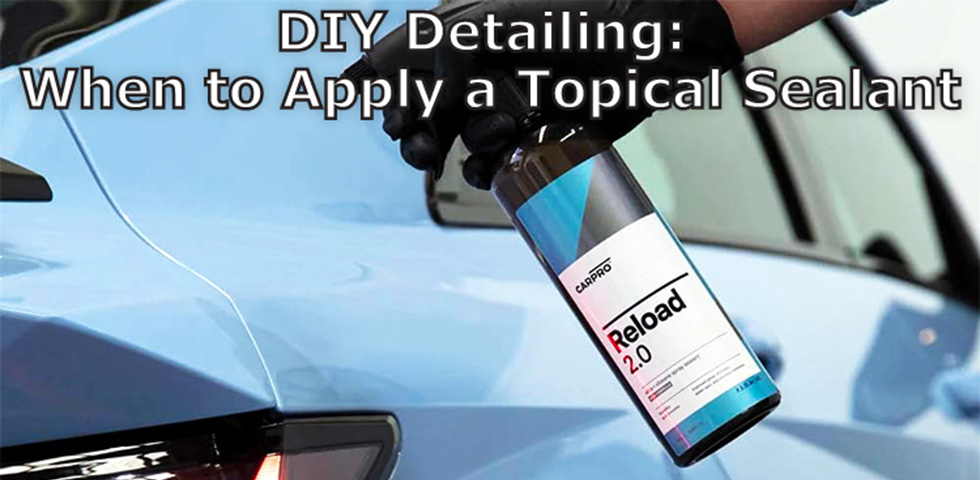
Contemporary topical sealants, especially ceramic based products, are a perfect and easy way to give automotive surfaces an additional barrier of protection against the elements.
Some products also help surfaces to stay cleaner for longer. And their chemistry helps move water off the surface faster, often resulting in faster washing and drying and less stagnant water on surfaces—which leads to lower amount of water spots.
Even though these are more durable than traditional waxes and sealants they still diminish over time. This begs the question of when to apply them to your vehicle to maximize their protection and benefits.
How Often to Apply a Topical Sealant to Vehicle Surfaces?
Many variables contribute to when and how often a topical sealant should be applied to vehicle surfaces. Most have to do with weather and climate exposure.
The following are primary factors which influence how frequently a topical sealant should be applied to vehicle surfaces…
The Manufacturer’s Product Durability
Some topical sealants last 3 months, whereas some ceramic spray sealants may last 6 months or more. We prefer ceramic based sealants that last at least 6 months because some seasonal conditions may persist more than a quarter of a calendar year.
It’s better to reapply to vehicle surfaces before a product starts to diminish in its properties or effectiveness. We recommend reapplying a sealant one month before the listed manufacturer’s durability rating.
Frequency of Vehicle Use
The more often a vehicle is used the more it is exposed to natural and manmade contaminants. These chemical agents may lead to product degradation before the suggested product durability.
Is the vehicle stored outside—constantly exposed to the elements?
If a vehicle is stored outside, it has no shelter from either nature or man. This means anything contained in the air can land on and interact with vehicle surfaces. These agents have the potential to compromise some or all panels which already have a topical sealant on them.
Does your climate have a unique harshness or seasonal conditions? If yes, when do they occur?
Do you live in a climate containing any of the following conditions:
- Extreme heat?
- Extreme Ice, requiring heavy de-icing agents on roads?
- High Concentrations of Salt in the Air?
- Volcanic ash in the soil?
- Monsoons?
- Love Bugs?
Any of the above conditions, alone or combined, could drastically lower the effectiveness or durability of a topical sealant. Some of these such as extreme heat, combined with low natural UV, will cause a sealant to quickly diminish.
How intense is the UV factor of your climate?
Lower natural UV protection will quickly ruin a sealant by either degrading it or by “sun burning” it off. Combine that with drastic heat, or salt in the air, and sealant protection can be greatly shortened.
Closing Thoughts on Topical Sealant Application Frequency
The overall frequency of applying a topical sealant to vehicle surfaces is a combination of all of the factors listed above.
As a rule, we encourage vehicle owners to apply a 6-month sealant three to four times a year—regardless of product durability. We like to begin by protecting surfaces from the harshest weather conditions for most, which means winters where roads may contain aggressive deicing agents.
To combat these conditions, we encourage vehicle owners to apply a strong ceramic spray sealant in early November to aid in surface protection until the end of February.
The second application would be March 1 and last until the end of June.
The third application would be added July 1 and last until the end of October.
The fourth and final application would be November 1st, which would also restart the cycle for the following year.
